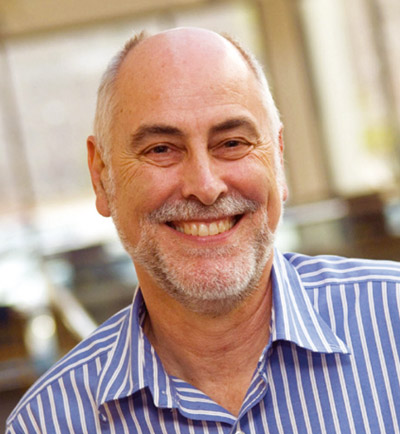
Image credit: G Adams/Jefferson Lab.
Some years after Ernest Rutherford invented nuclear physics, he expressed a wish for “a copious supply of atoms and electrons which have an individual energy far transcending that of the α and β particles” available from natural sources so as to “open up an extraordinarily interesting field of investigation”. He was calling for the invention of the particle accelerator, but probably had no idea that by 2011 – the centenary of his famous publication on the nuclear atom – some 30,000 of them would operate worldwide, mostly for applications outside discovery science. And given that he famously dismissed as “moonshine” all talk about someday extracting useful energy from atoms, he surely did not foresee what might conceivably become one of the most important practical applications of accelerators: accelerator-driven systems, or ADS, for transmuting nuclear waste and generating electricity.
How would an accelerator replace a nuclear reactor? Today’s reactors include a core in which the composition and configuration of the nuclear fuel are such that there are enough neutrons to maintain a fission chain reaction. An ADS system involves a fuel configuration where the neutrons necessary to establish a sustainable fission chain reaction are produced by spallation of a target by an accelerator. Because the neutrons that maintain the chain reaction are produced by the accelerator – and are thus external to the core of the ADS reactor – an ADS reactor has a lot of flexibility in the elements and isotopes that can be fissioned in its core.
Among the fission products of uranium-235 are the minor actinides (mainly americium and californium), which are radioactive with extremely long half-lives. Their presence in nuclear waste drives the storage requirements for spent fuel: 100,000 years to return the radioactivity to its initial levels. These isotopes could be fissioned (burnt) in a conventional reactor, but given the characteristics of their delayed neutrons there is a maximum concentration of these materials that can be consumed in existing reactors. With ADS, however, the minor actinides can be a much larger fraction of the fuel because an ADS core is subcritical and the fission neutrons are produced by the accelerator externally to the core. Thus, core kinetics and stability do not come into play as much as they would in a conventional reactor. So, ADS can burn up a much greater quantity of the minor actinides than a typical commercial reactor, and can return the radiation to its initial level in “only” 300 years.
Nobel laureate Carlo Rubbia and others have been advocating ADS for two decades – and for good reason. By efficiently burning the minor actinides, ADS could conceivably transform the landscape of the waste-disposal and storage problem. And to paraphrase a US white paper from September 2010, additional advantages are flexibility of fuel composition and potentially enhanced safety. With ADS, nonfissile fuels such as thorium can be used without incorporating uranium or plutonium into fresh fuel. An ADS can be shut down simply by switching off the accelerator. With a large enough margin to criticality, reactivity-induced transients cannot cause a supercritical accident and power control via beam-current control allows fuel burn-up compensation. However, as we have learnt from Fukushima, it remains necessary to address the problem of long-term removal of the residual decay heat left in the fuel once the fission reaction has been shut down.
The overall potential of ADS has been understood for two decades, but technological evolution during that time has improved the outlook for actual implementation. As early as 2002, a European study concluded that “beam powers of up to 10 MW for cyclotrons and 100 MW for linacs now appear to be feasible”.
It is important to highlight the ADS prospects for power production using thorium-based fuel. Even though thorium has no current market value, it is known to be plentiful. Thorium can absorb a neutron to become 233U, which is fissile. Its potential benefits for nuclear energy are proliferation resistance, minimized production of radiotoxic transuranics, avoidance of the need to incorporate fissile material in the fuel and the potential to operate nearly indefinitely in a closed fuel cycle.
Interest has been growing worldwide. Thorium particularly interests India, Norway and China, all with programmes investigating the 233U-thorium fuel cycle. India, which has little uranium but much thorium, sees ADS as part of its energy future. China is rapidly building reactors, but not having identified a stable geological waste repository is investigating ADS for transmutation of minor actinides. Perhaps most notably, Belgium is planning MYRRHA, an 85 MW ADS prototype to be built at the Belgian Nuclear Research Centre, SCK.CEN. The projected total capital cost is €950 million, with a construction start set for 2015.
Some 200 of us are gathering on 11–14 December in Mumbai for the 2nd International Workshop on Accelerator-Driven Sub-Critical Systems & Thorium Utilization. The first conference was held last year at Virginia Tech, in Blacksburg, Virginia. Considerable effort has been spent to get a world-class International Advisory Committee that includes Rubbia as well as Srikumar Banerjee, chair, Atomic Energy Commission, India, and Hamid Aït Abderrahim, director, MYRRHA. For more about the conference, see www.ivsnet.org/ADS/ADS2011.





